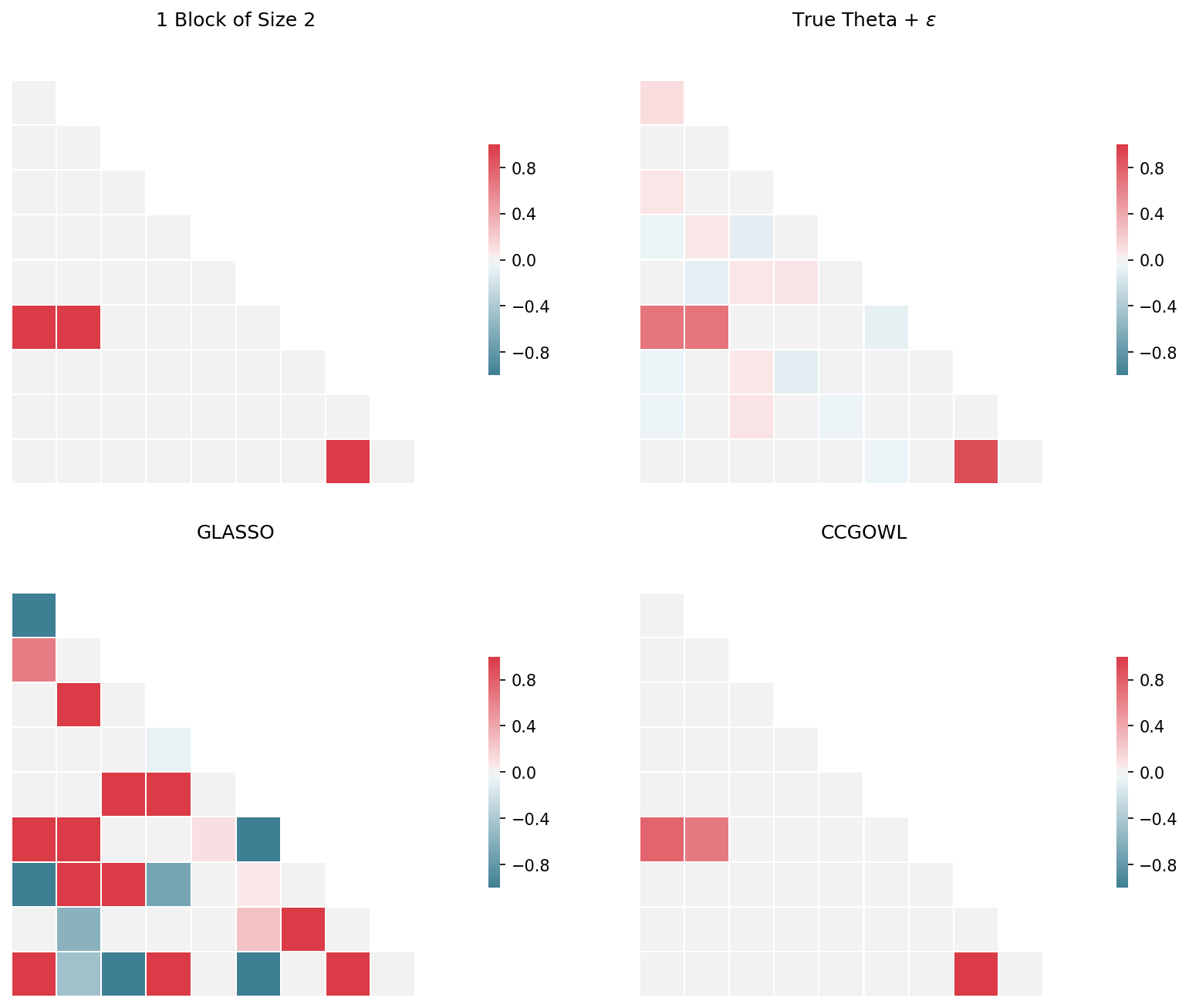CCGOWL Example¶
[9]:
import numpy as np
from src.models.ccgowl import CCGOWLModel
from src.data.make_synthetic_data import generate_theta_star_gowl, standardize
from src.visualization.visualize import plot_multiple_theta_matrices_2d
from sklearn.covariance import GraphicalLasso
%load_ext autoreload
%autoreload 2
The autoreload extension is already loaded. To reload it, use:
%reload_ext autoreload
We define the column-by-column Graphical Order Weighted \(\ell_1\) (ccGOWL) estimator to be the solution to the following unconstrained optimization problem:
where
where \(\beta_j \in \mathbb{R}^{p-1}\) and \(\lambda_1 \ge \lambda_2 \ge \cdots \ge \lambda_p \ge 0\). The goal of this estimator is to identify correlated groups within each column of the precision matrix estimator \(\hat{\Theta}\).
Synthetic Data Example¶
We design our first example for a very low \(p\) and specify one group of size two. As is custom in the literature we also standardize our design matrix \(X\).
[10]:
p = 10
n = 100
n_blocks = 1
theta_star_eps, blocks, theta_star = generate_theta_star_gowl(p=p,
alpha=0.5,
noise=0.1,
n_blocks=n_blocks,
block_min_size=2,
block_max_size=6)
Hyperparameters were chosen by cross-validation. Now that we have generated \(\theta^*\) and \(\theta^* + \varepsilon\) we can generate a dataset by drawing i.i.d. from \(N(0, (\theta^* + \varepsilon)^{-1}\) distribution.
[11]:
theta_star_eps = theta_star_eps[0] # by default we generate 1 trial, but for simulations we generate many trials
sigma = np.linalg.inv(theta_star_eps)
n = 100
X = np.random.multivariate_normal(np.zeros(p), sigma, n)
X = standardize(X) # Standardize data to have mean zero and unit variance.
S = np.cov(X.T)
lam1 = 0.05263158 # controls sparsity
lam2 = 0.05263158 # encourages equality of coefficients
[12]:
model = CCGOWLModel(X, lam1, lam2)
model.fit()
theta_ccgowl = model.theta_hat
Threshold reached in 9
Threshold reached in 0
Threshold reached in 0
Threshold reached in 0
Threshold reached in 0
Threshold reached in 6
Threshold reached in 3
Threshold reached in 0
Let’s compare the GOWL theta estimate to the Graphical LASSO model.
[13]:
gl = GraphicalLasso()
gl.fit(S)
theta_glasso = gl.get_precision()
[14]:
plot_multiple_theta_matrices_2d([
theta_star, theta_star_eps, theta_glasso, theta_ccgowl
], [
f"1 Block of Size 2", 'True Theta + $\epsilon$', 'GLASSO', 'CCGOWL'
])
